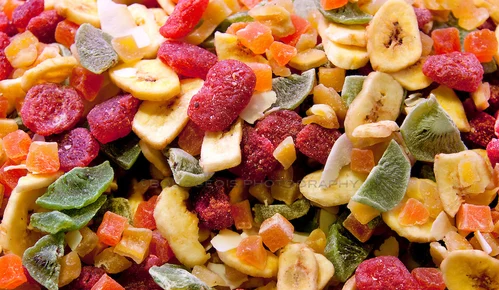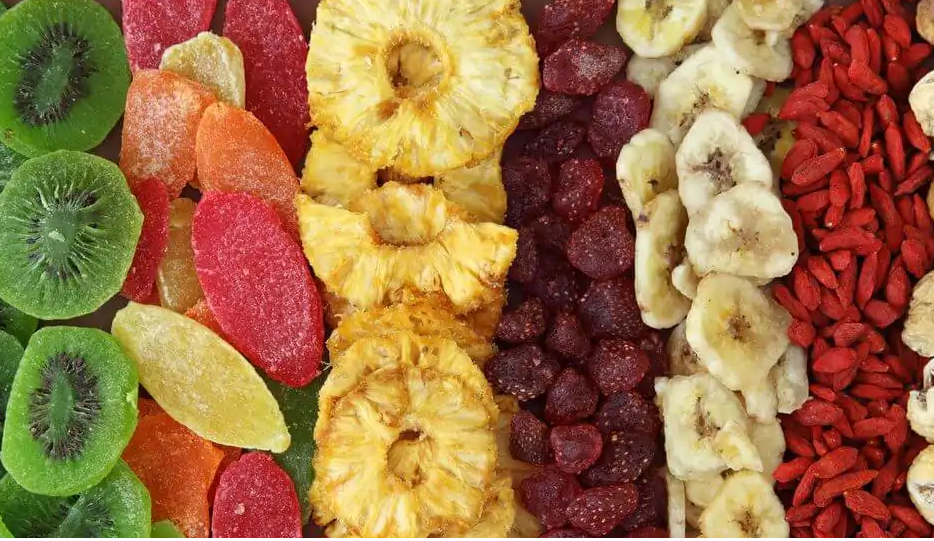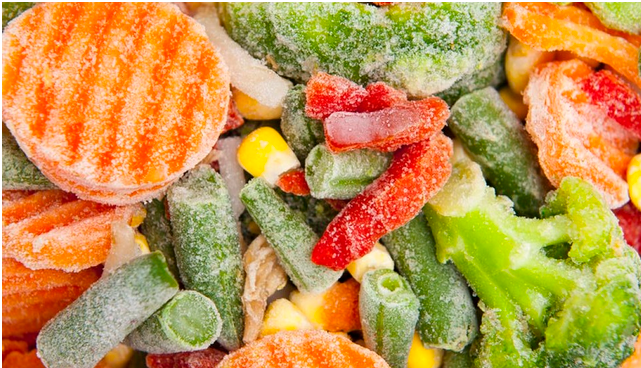Freeze drying, dehydration, and freezing are all methods of food preservation that remove or reduce moisture content, but they differ in their methods and outcomes.
The details and benefits of each:
Freeze Drying
Freeze drying removes nearly all moisture by freezing the food, then creating a vacuum to sublimate ice crystals into vapor, resulting in a longer shelf life and a product that rehydrates well with minimal texture or nutrient loss.
- Benefit: Retains the original size, color, shape, taste, and nutritional value of the food. Extended shelf life (up to 25 years with proper storage). The dehydrated food is lightweight and can be rehydrated quickly
- Process: Food is frozen at extremely low temperatures, then placed under a vacuum to sublimate (directly convert) ice crystals into vapor, removing moisture.
- Moisture Removal: Removes nearly all moisture (up to 99%).
- Texture: Resulting product is generally crunchy and has a porous, airy texture.
- Nutritional Value: Retains a high percentage of the original value.
- Shelf Life: Can have a shelf life of 20-25 years or more when stored properly.
- Equipment: Requires specialized, more expensive equipment.
- Example:
- Fruits: Freeze-dried strawberries, raspberries, blueberries, apples, and bananas are popular.
- Vegetables: Freeze-dried spinach, broccoli, carrots, onions, and peppers are also common.
- Meats: Chicken, beef, pork, and fish can all be freeze-dried.
- Dairy: Freeze-dried cheese and even ice cream are available.
- Ready-to-eat meals: Freeze-dried versions of stews, chili, and even Pad Thai have become popular.
- Spices and Herbs: Freeze-dried spices like ginger, oregano, and basil are also common.
- Beverages: Instant coffee, tea, and juices can be freeze-dried.

Dehydration:
- Meaning: Dehydration, on the other hand, removes moisture through heat, often altering texture, taste, and nutritional value.
- Benefit: Reduces moisture content, inhibiting microbial growth and extending shelf life. Dehydrated foods can be a healthier snack option
- Process: Heat is applied to evaporate water from the food.
- Moisture Removal: Removes a significant amount of moisture, usually 80-95%.
- Texture: Can result in a chewy, crispy, or leathery texture, depending on the food.
- Nutritional Value: May lose some nutrients due to the heat treatment.
- Shelf Life: Typically has a shelf life of several months to a few years.
- Equipment: Requires a food dehydrator, which is generally more affordable and easier to use than a freeze dryer.
- Examples :
- Dried Fruits: This category includes a wide variety of fruits, from classic raisins and prunes to more unique options like dried mangoes or berries.
- Jerky: A popular dehydrated snack, jerky is typically made from cured and dried meat, often beef, but can also include other types of meat or poultry.
- Powdered Milk: This is a dehydrated form of milk that can be reconstituted by adding water.
- Dehydrated Vegetables: These are vegetables that have been dried, often used in soups, stews, and other dishes where the original texture is not crucial.
- Dehydrated Herbs: Herbs are often dehydrated to preserve their flavor and aroma, making them shelf-stable for longer periods.
- Other Examples: Dehydrated bread, dehydrated eggs, and even some forms of pet food can also be dehydrated.

Freezing:
Meaning: Freezing, primarily for short-term preservation, slows down microbial growth but doesn’t eliminate moisture or extend shelf life as effectively as freeze drying or dehydration.
- Benefit: Preserves most of the nutrients, although some loss can occur during the freezing process. Less expensive than freeze-drying as it’s a simpler process.
- Process: Food is chilled to temperatures below freezing (typically -18°C or less).
- Moisture Removal: Retains a significant amount of moisture, although some moisture can be lost during freezing and thawing.
- Texture: Can alter the texture of some foods (especially fruits and vegetables) due to ice crystal formation during thawing.
- Nutritional Value: Retains most of the original nutritional value.
- Shelf Life: Preserves food for a limited time, typically months or years, depending on storage conditions and packaging.
- Equipment: Requires a freezer.
- Examples:
- Frozen meat: This includes various cuts of beef, pork, lamb, and poultry like chicken and turkey.
-
- Pre-cooked frozen meals: These are ready-to-eat meals like casseroles, stews, or other cooked dishes that can be reheated.
-
- Dairy & Eggs:
- Frozen cheese: Grated or cubed cheese can be frozen for extended periods.
- Frozen milk: Both whole milk and dairy-free alternatives can be frozen, though the texture might change slightly upon thawing.
- Frozen eggs: These can be frozen in their shells or cracked and frozen separately.
- Fruits & Vegetables: Berries, bananas, and other fruits freeze well for smoothies, baking, or later consumption.
-
- Frozen vegetables: Many vegetables, like broccoli, spinach, carrots, and peas, can be blanched and frozen for future use.
-
- Frozen bread: Bread, bagels, and other baked goods can be stored in the freezer for several months.
- Frozen pastries: Cakes, cookies, and other pastries can also be frozen.
- Leftovers: Any cooked food that is not immediately consumed can be frozen to extend its shelf life.

In essence, freeze drying is a more advanced form of dehydration that preserves food’s texture, taste, and nutritional value better than traditional dehydration or freezing.
